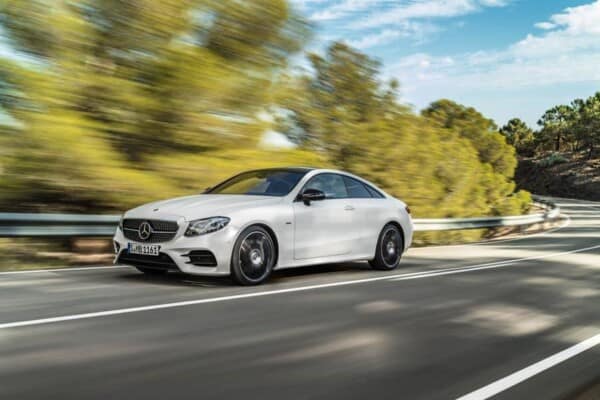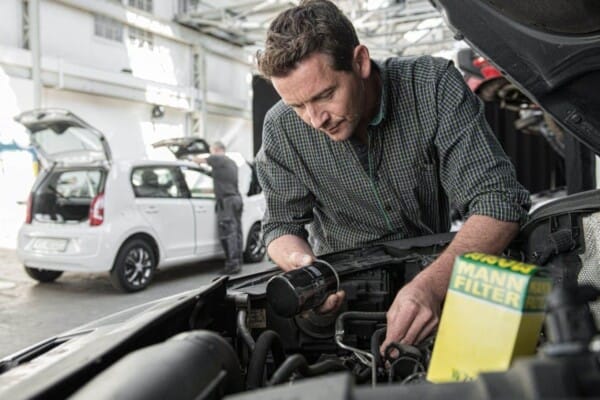The winter season can be long and dreary and the last thing you need is being stranded in the middle of nowhere because your car isn’t starting due to the cold weather or its snowing too harshly. This is what makes it imperative for vehicle-owners to prepare their car for winter to avoid all possible issues and problems and drive safely and responsibly.

To understand more, let’s take a look at a few useful tips on how to prepare your car for the winter:
Preparing your vehicle for Winter Driving
Recent studies show car accidents are the number-one cause of death during winter storms. Therefore, before winter sets in, make sure to follow these important tips for winterizing your vehicle and preventing any chances of accidents.
- It’s time for a visual inspection, take a thorough look at your vehicle and try to note down things that require immediate attention. Additionally, make sure to check the battery, brakes, transmission, anti-freeze levels and the defroster, heater and thermostat.
- For the battery, make sure to check all cables and clamps for corrosion or fraying. If you notice a white powdery type substance around the clamps, remember to clean it off immediately using water or soda.
- Keep in mind that cold weather puts your engine under a lot of strain, making your battery work harder. Therefore, before taking your vehicle for a drive, give the battery a boost by charging it via a battery charger.
- Car care in winter can seem to be an impossible task, but this doesn’t mean you should leave your vehicle the way it is. So, keep in mind to check your oil and its viscosity. In the winter season, it is usually better to switch to thinner oil. This way you eliminate any startup issues, by preventing the engine oil from freezing.
- Top off the coolant and anti-freeze levels of your vehicle before heading out for a drive. It is advised to adjust your engine coolant and anti-freeze to a winter ratio of 50:50 (water and coolant) to prevent any freezing issues.
- If snow and ice are a problem in your area, consider replacing your current tires with winter ones. Nevertheless, if you cannot afford new tires right now, you can always keep a regular check on the tire pressure and depth. During the winters, it is advised to check your tire pressure weekly.
- Snow on windshields is one of the main causes of accidents during the winter. This is mainly because snow can impair visibility while driving. Therefore, consider replacing the windscreen wipers and the wiper fluid of your vehicle.
- Purchase winter wipers and avoid using plain water to clean windshields, as it tends to freeze more easily. Additionally, if you have a weak battery, instead of draining it out completely, it is advised to purchase an ice scrapper. This way, you can manually remove snow from your windshield.
- Road salt that is commonly used in the winter has the capability to damage your vehicle’s paint. Therefore, consider giving your vehicle a daily wash in the winters. Additionally, after cleaning make sure to give your vehicle a fresh coat of wax. This way, you can keep your vehicle looking new and prevent corrosion.
- Perform a visual inspection of your vehicle’s lights. Keep in mind that fog can sometimes impair other driver’s visibility, so it is important that both your front and back lights function properly. Check and see if the headlights are properly aimed at the road and give enough light.
- Inspect the exhaust system of your vehicle to make sure it is clear of carbon monoxide leaks. This is mainly because carbon monoxide leaks can prove to be dangerous for your health, especially if the windows are closed.
- Before the winter sets in, make sure to visit the mechanic for a proper tune-up. This way, you can identify and clear all potential problems such as rough idling, sluggish engine performance, hard starts, and pings.
Driving Tips for Icy and Snowy Roads

A common question many people ask is ‘how to take care of your car in winter?’ While there are many tips you can follow on winterizing your vehicle (listed above), what’s even more important is to drive safely and responsibly. Therefore, here are a few defense driving tips for winter:
- Before heading out on the road, be sure to check the weather forecast, so that you are aware of any snow storms. In addition, check the news for any road advisories, accidents, or road closings.
- The winter season can give out some good surprises, it can start snowing or raining any time. Therefore, it is better to plan your route in advance. If a road is blocked or closed, don’t attempt to continue driving and switch your route.
- While driving, use gentle impulses. Brake early and carefully, turn extremely slow, and accelerate gently. This is mainly because the roads are slippery during the winter and unexpected quick movements could result in a spin or a rollover.
- Don’t keep your vehicle running on fumes and make sure to keep your fuel tank full, especially during the winter. Near-empty fuel tanks can cause great damage to your vehicle and can freeze or block any flow of gas to the engine.
- Avoid tailgating other vehicles and vice versa, especially trucks. They are heavier than normal cars and require more time and considerably longer stopping distances.
- As mentioned earlier, driving in fog, rain, and snow can be extremely dangerous. Therefore, see and be seen by always keeping your lights on, even during the afternoon and evening.
So, now that you are familiar with the above mentioned tips on how to prepare your car for the winter, you can drive peacefully and with all safety checks in mind, avoiding any possible accidents or engine trouble.







